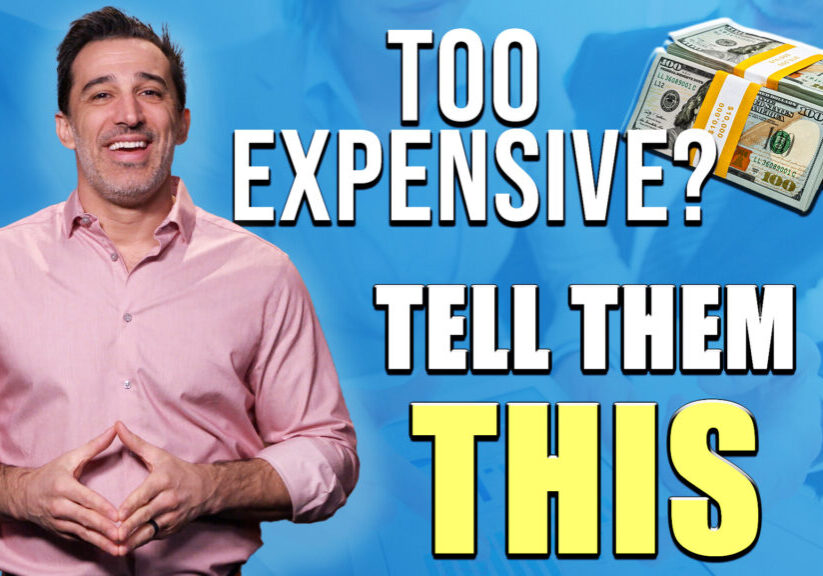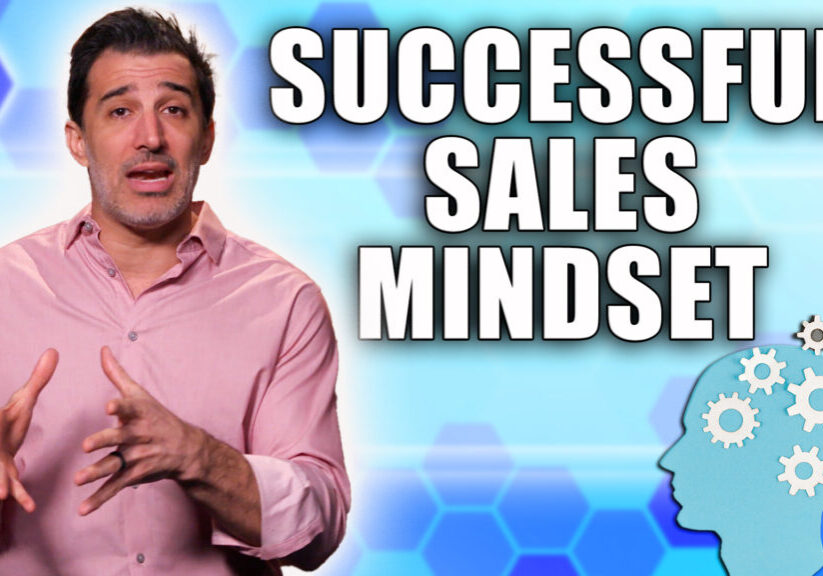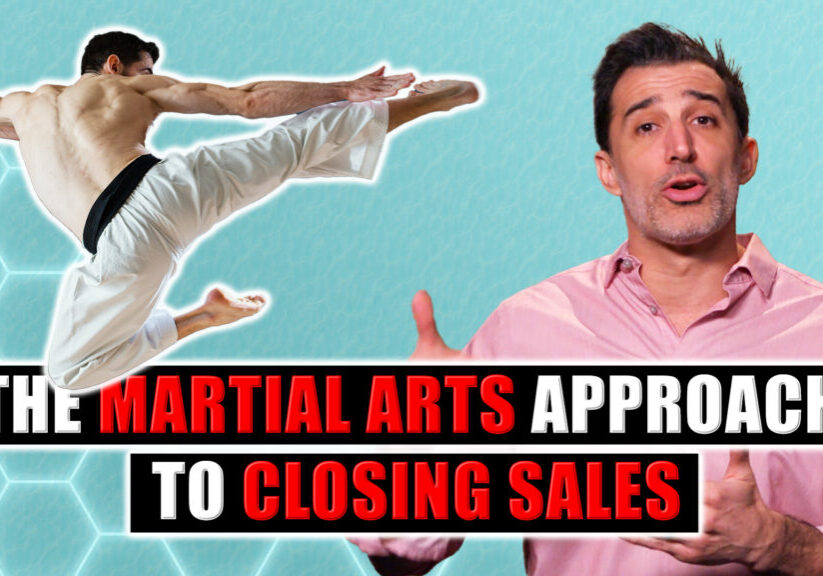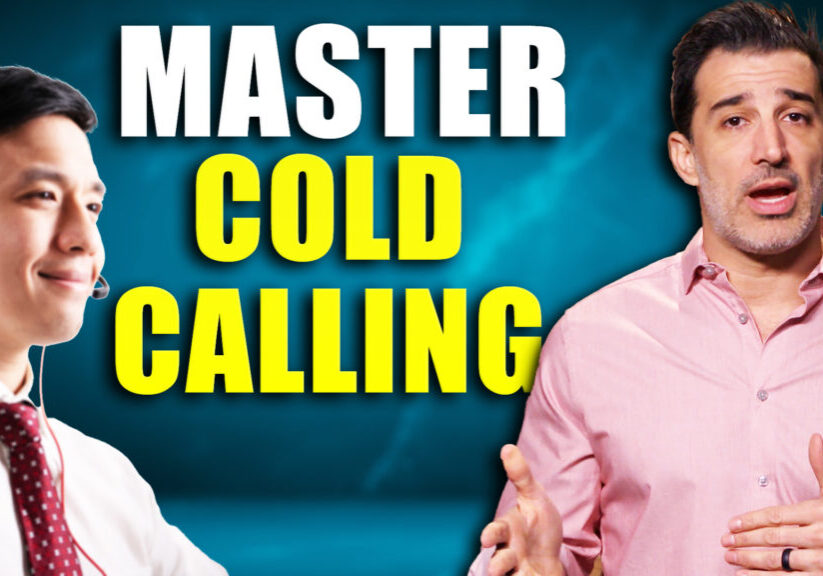Consultative selling—you’ve probably heard this term a lot lately. Chances are, you’ve read some of the countless books and articles about it, too.
And, no doubt, you’ve heard many sales gurus stating some form of the following: “You’ve got to start using consultative selling, now!”
But what does that really mean? And how do we leverage a consultative approach in every sales conversation that we have?
In this video, I’m going to show you 7 consultative selling strategies to close the deal. Check it out:

1. Bring insight.

One of the keys to consultative selling is leading with insight at the beginning of interactions. Don’t just get on the phone or Zoom with a prospect and say, “Hey, I’d love to learn more about your business to see if we can help you.” That brings no value. Instead, start to think like a high-paid consultant who works at McKinsey or Bain Consulting or Boston Consulting Group. These folks bring massive value in insight to their customers. As salespeople, we’ve got to bring that insight, too. Use your bird’s-eye view of the industry, gleaned from having talked to hundreds of people just like your prospect, to show that you understand what’s going on in their world. The ability to share this genuine insight is the foundation of consultative selling.
2. Disqualify.

The concept of disqualifying prospects represents the biggest shift from the traditional sales model to a more consultative approach. In traditional sales, salespeople try to pitch the features and benefits of their offering to pretty much anyone they can get in front of. Meanwhile, consultative selling is more about thinking like a doctor to determine whether there really is a fit in the first place. Does it even make sense to continue the conversation? That’s what disqualification is all about: not starting with the assumption that you’re going to close every single person that you get in front of, but instead, determining whether the person in front of you is a good fit for what you offer. To effectively disqualify, you must ask the right questions to find out what’s really going on in your prospect’s world.
3. Dig deep.

While many salespeople ask questions of their prospects, they’re not digging deep enough. It’s like they’re just focusing on the very tip of the iceberg. These surface-level, easy-to-answer questions don’t create a lot of value in the eyes of the prospect. When it comes to consultative selling, the key is to use your questions to dig deep. Ask spontaneous questions based on what the prospect’s saying, such as, “Help me understand what prompts you to say that,” or, “Why is that important to you?” The deeper you dig, the better you’ll understand your prospects—and the more likely you are to ultimately close that sale.
4. Know their drive.

Another key to consultative selling is understanding why the prospect wants to solve the particular problem at hand. Our questions must dig deep enough that we come away with a strong understanding of what’s really in it for them to solve the challenge. Why is solving this problem important? We can’t just assume that every problem is critical for the prospect to solve—because that’s not true. In any business, everyone’s doing triage. They can’t solve every problem; they can only solve certain problems. The best way to determine which problems your prospect is most likely to want to solve right now, is to understand their drive for solving the problem. Why is this important to them? How does this issue affect them personally? The more we can understand the personal reasons behind each prospect’s business objective, the more likely we are to ultimately close the sale.
5. Solve.

Most salespeople have been taught that they need to present or pitch their offering or services, but that’s not true when it comes to consultative selling. With a consultative approach to sales, you simply want to demonstrate that you can solve your prospect’s challenges. That’s the absolute crux of consultative selling. I call this the “solve” phase. It’s not about some fancy pitch or using all of your PowerPoint slides to show that you’ve got cooler designs than everyone else. Just show that you can solve their problems. That means starting by understanding their problems very deeply, and then connecting the dots with how your solution will help them get to the place they want to go.
6. Use case studies.

In the solve phase, there is no better consultative selling tool to use than case studies. When I tell salespeople to use a “case study presentation,” all that really means is using a stash of stories or examples at any point in the sales conversation to demonstrate how you’ve solved these issues in the past. Using case studies is a much more powerful method of showing that you can solve their challenges than just talking about the features or the benefits of your offering. Use stories and examples of real-life situations where you have helped a person get from Point A to Point B. These case studies are going to be so much more compelling than anything else that you can present to a prospect.
7. Focus on next steps.

Consultative selling is not a high-pressure, one-call close situation. Instead, the key is to calmly focus on next steps. Very few industries today call for a true one-call close situation anymore. Chances are, you’ve got to have a couple of meetings with the prospect in order to close the deal. Rather than being focused on trying to close the deal right in front of you, focus on next steps.  Lock in those next steps with clear appointments in the calendar. Send out a calendar invite and don’t get off the phone until the prospect accepts. That way, you’re holding the sale together with next steps.
Lock in those next steps with clear appointments in the calendar. Send out a calendar invite and don’t get off the phone until the prospect accepts. That way, you’re holding the sale together with next steps.
So there you have it. Now you know 7 Consultative Selling Strategies to Close the Deal. Which of these consultative selling tips did you find most useful for your own sales strategy today? Be sure to share your thoughts in the comments section below to join the conversation.

Enjoyed this article? Please share away!

Get instant access to our free sales training:
Why Prospects Push Back on Price, Give 'Think-It-Overs,' and Ghost in Sales Until They Meet a Sales Superstar Who Is Following These 7 Simple Keys

About the Author Marc Wayshak
Marc is is the best-selling author of three books on sales and leadership, including the highly acclaimed titles Game Plan Selling, The High-Velocity Sales Organization and his forthcoming book, Sales Conversations, Mastered.
Marc is a contributor to Inc, HubSpot, Fast Company, Entrepreneur Magazine, and Huffington Post Business. He also hosts a popular YouTube channel on sales strategy with over 103,000 subscribers.
Marc helps thousands of people his data-driven, science-based approach to selling that utilizes all the best tools available to sales organizations today.



![How-to Sell to Power [C-Suite Sales Must-Knows!] How to Sell to Power [C-Suite Sales Must-Knows!]](https://salesinsightslab.com/wp-content/uploads/bb-plugin/cache/How-to-Sell-to-Power-C-Suite-Sales-Must-Knows-1024x576-landscape-7a52c541b28a7b772ad9e1010d8240be-.jpg)


![The Absolute Best Way to Start a Sales Conversation [WITH ANY PROSPECT] The Absolute Best Way to Start a Sales Conversation [WITH ANY PROSPECT]](https://salesinsightslab.com/wp-content/uploads/bb-plugin/cache/The-Absolute-Best-Way-to-Start-a-Sales-Conversation-WITH-ANY-PROSPECT-1024x576-landscape-be9d9379ab94d9f71b5bfeed42246a84-.jpg)